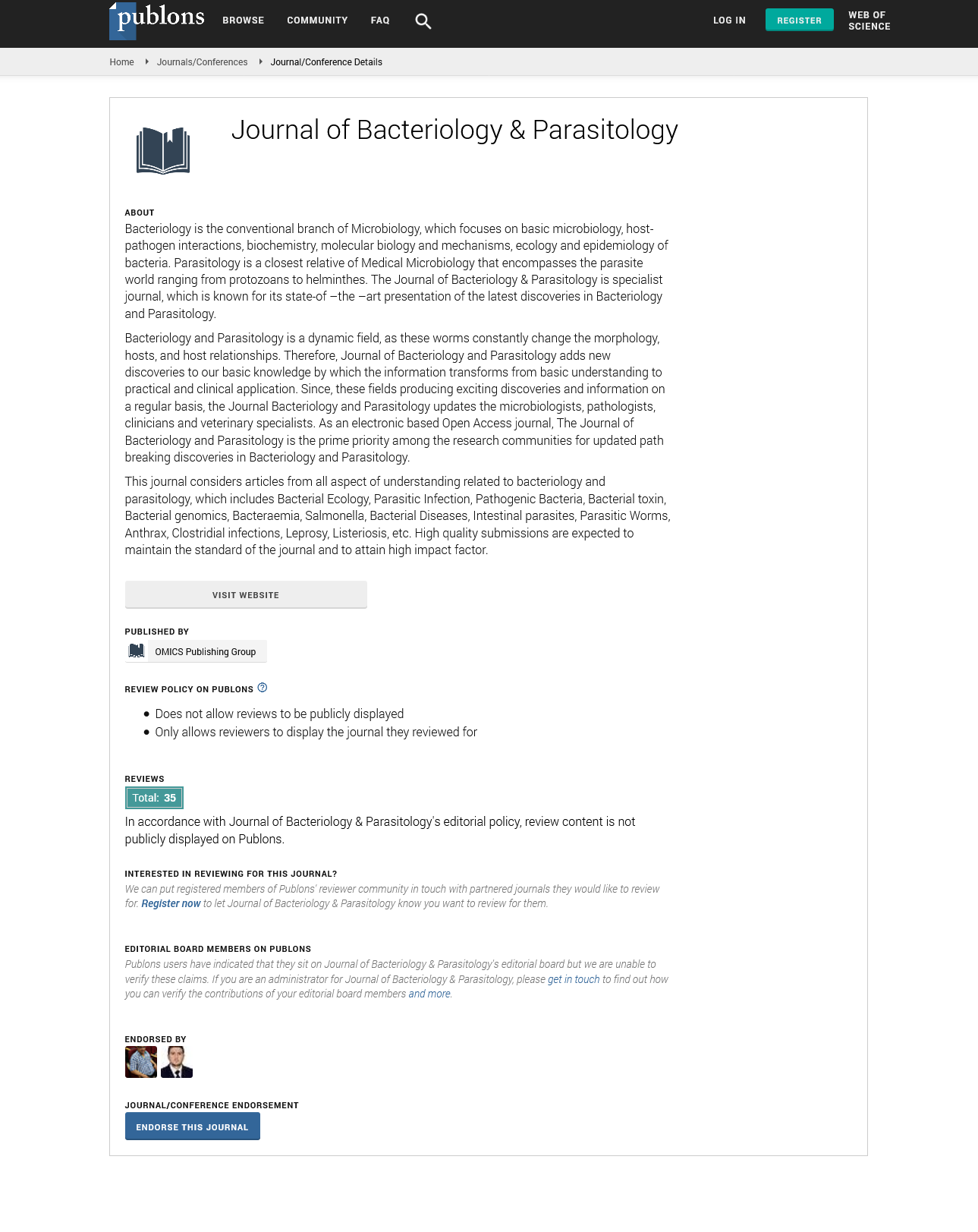Indexed In
- Open J Gate
- Genamics JournalSeek
- Academic Keys
- JournalTOCs
- ResearchBible
- Ulrich's Periodicals Directory
- Access to Global Online Research in Agriculture (AGORA)
- Electronic Journals Library
- RefSeek
- Hamdard University
- EBSCO A-Z
- OCLC- WorldCat
- SWB online catalog
- Virtual Library of Biology (vifabio)
- Publons
- MIAR
- Geneva Foundation for Medical Education and Research
- Euro Pub
- Google Scholar
Useful Links
Share This Page
Journal Flyer

Open Access Journals
- Agri and Aquaculture
- Biochemistry
- Bioinformatics & Systems Biology
- Business & Management
- Chemistry
- Clinical Sciences
- Engineering
- Food & Nutrition
- General Science
- Genetics & Molecular Biology
- Immunology & Microbiology
- Medical Sciences
- Neuroscience & Psychology
- Nursing & Health Care
- Pharmaceutical Sciences
Bloodstream infection rates and their association with differently designed needle-free connectors
Joint Meet on 16th World Congress on INFECTION PREVENTION AND CONTROL & 5th International Conference on BACTERIOLOGY
September 16, 2020 | Webinar
Victor D. Rosenthal
International Nosocomial Infection Control Consortium, USA
Scientific Tracks Abstracts: J Bacteriol Parasitol
Abstract:
During 6-year study period, from January 2012-December 2017, in 523 intensive care units (ICUs) in 45 countries from Latin America, Europe, Eastern Mediterranean, Southeast Asia, and Western Pacific, prospective data from 532,483 ICU patients hospitalized in 242 hospitals, members of International Nosocomial Infection Control Consortium (INICC), for an aggregate of 2,197,304 patient days, were collected through INICC Surveillance Online System (ISOS). US CDC-NHSN definitions for central line associated bloodstream infection (CLAB) were applied. In the medical-surgical ICUs of INICC, the pooled CLAB rate was 5.05 and in US ICUs was 0.8 per 1,000 central line-days. During 6-year study period, from September 1st, 2013 to 31st May, 2019, a prospective, surveillance study on peripheral line associated BSI (PLAB) conducted by INICC, in 727 ICUs, from 268 hospitals in 141 cities of 42 countries of Africa, the Americas, Eastern Mediterranean, Europe, South East Asia, and Western Pacific regions. Were followed 149,609 ICU patients for 731,135 bed-days and 743,508 peripheral line (PL) -days. Were identified 1,789 PLABs, amounting to a rate of 2.41/1000 PL-days. Mortality in patients with PL but without PLAB was 6.67%, and 18% in patients with PL and with PLAB. The length of stay in patients with PL but without PLAB was 4.83 days, and 9.85 days in patients with PL and PLAB. Between April 2012 and August 2014, a Randomized Clinical Trial (RCT) with 1,096 patients in 5 ICUs was conducted in India. We compared Needle-free connectors (NFCs) vs three-way stopcocks (3WSCs) to analyze impact on CLAB rates. The study included 547 patients and 3619 central line (CL)-days for the NFC group, and 549 patients and 4061 CL-days for the 3WSC group. CLAB rates were 2.21 per 1000 CL-days for NFC and 6.40 per 1000 CL-days for 3WSC (RR, 0.35; 95% CI, 0.16-0.76; P 0.006). Using a NFC for each extra dollar invested resulted in a savings of $124. A meta-analysis was conducted comparing NFC vs 3WSC regarding BSI rates. Relevant randomized studies published from January 2000 to September 2018 were reviewed. We identified, and selected for the meta-analysis, 8 studies comparing BSI rates associated with NFCs with negative-displacement, neutral-displacement, or positive-displacement devices, with 3WSC. The results were: RR 0.53, 95% CI 0.28-1.00, and the Relative Difference was -0.018 with a 95% CI: 0.039-0.004. BSI risk was 47% higher using 3WSC compared with NFCs. Conclusions: CLAB and PLAB rates are high worldwide, and NFCs are associated with lower rates of BSI, and lower healthcare costs.
Biography :
Victor Rosenthal is a Founder and Chairman of INCC and his hospital Epidemiology and Infection Control Medical Doctor graduated in Argentina, Specialist in Internal Medicine, in Infectious Diseases, Certified on Infection Control. Fellow of infectious diseases at University of Wisconsin. Fellow of the Program of Clinical Effectiveness of Harvard University. Non-profit international research center which focuses on Healthcare-Associated Infections (HAIs) leading trials and activities about HAI with more than 2,000 researchers in hundreds of cities in more than 50 countries.

